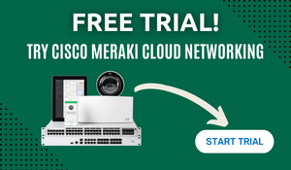For decades, the corporate LAN was a self-contained entity. What happened on LAN stayed on the LAN. This had its disadvantages – mobility wasn’t easy, for instance – but in many ways made for a network that hummed along nicely. Security, for instance, was nice and simple: Everything (theoretically) was safe and sound behind the firewall, provided appropriate security was in place. Though it didn’t always work out that way, the essential mindset was that IT could account for, track and secure everything.
 This nice demarcation between what is inside and what is outside is gone. When it is time to upgrade your network, planners will be dealing with a new reality. The new world is virtualized, network speeds are far faster, there are many more home offices and a hyper emphasis on mobility. These changes have empowered cloud approaches. The tidy world of the IT fortress has given way to hybrid networks in which networking happens both on and off the corporate LAN. This drastically changes the way in which those users and their IT and telecommunications assets are managed.
This nice demarcation between what is inside and what is outside is gone. When it is time to upgrade your network, planners will be dealing with a new reality. The new world is virtualized, network speeds are far faster, there are many more home offices and a hyper emphasis on mobility. These changes have empowered cloud approaches. The tidy world of the IT fortress has given way to hybrid networks in which networking happens both on and off the corporate LAN. This drastically changes the way in which those users and their IT and telecommunications assets are managed.
Rich Hillebrecht, the vice president and CIO at Riverbed Technology, offers a long and insightful post at The Platform describing some of the challenges of a hybrid world in which organizations simultaneously rely on their own and public networks. The bottom line is that everything that an employee needs for work must be available with equal ease of use and security across all realms. Since there can be multiple cloud vendors, the operational complexity multiplies by orders of magnitude. The key, Hillebrecht writes, is end to end visibility.
The advent of Bring Your Own Device work arrangements also is changing things. Not only are employees more mobile – within the corporate facility as well as outside – but the type, make, model and operating system of the devices they use is more of then not a mystery to the IT department. Mobile device management (MDM) vendors are devising strategies to provide some order and meaningful oversite in these exhilarating – but trying – times.
Smart companies run systems that are part traditional and part cloud-based. They also have strong MDM systems in place. One such MDM platform is the Cisco Meraki Systems Manager, which enables thousands of mobile end points to be tracked and controlled.
Meraki Mobile Device Management
Meraki Systems manager helps to enforce policies across mobile devices across your entire network. You'll easily be able to protect data, control the usage fro each device, and restrict access on a granular level. This can all easily be controlled through the Meraki dashboard- you'll assign a personalized name to each device, so say you don't want Pete the sales guy to watch YouTube videos, but you need to allow Mary the marketing head access.
Systems Manager also makes it easy to define and deploy network settings like wireless connectivity, security settings, and remote VPN access to all devices on your network at once. Continue reading to learn more about Meraki Systems Manager.













